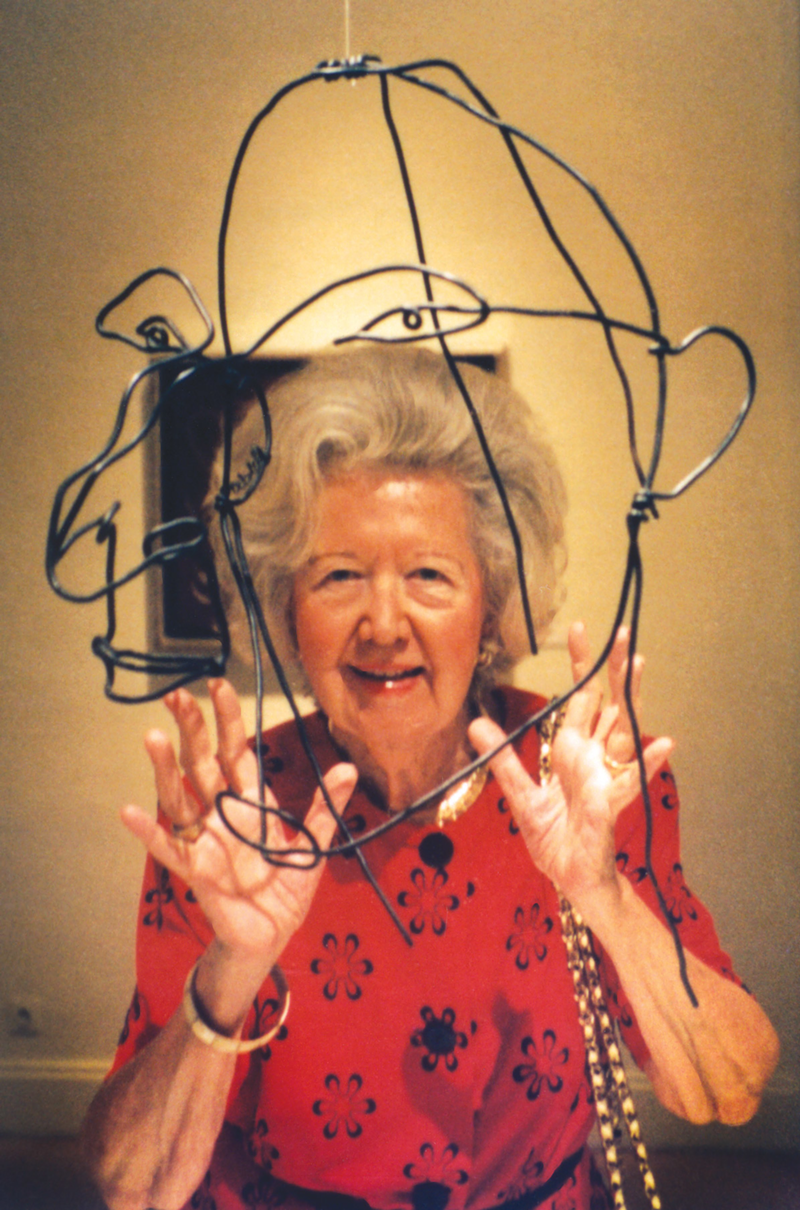One of Downton Abbey’s lead characters is Elizabeth McGovern’s Cora, an American heiress who came to England with her mother in the late 1800s, married Hugh Bonneville’s Earl of Grantham and used her wealth to help the family estate survive. Her money comes from the Cincinnati dry goods fortune established by her father, Isidore Levinson.
It’s all fiction from the imagination of Abbey creator Julian Fellowes, but there’s a real-life correlation of sorts in the 20th century odyssey of Marjorie Schiele. Her fortune came from the Over-the-Rhine department store founded by grandfather H.F. Adolph Hanke, and with her widowed mother she moved from Cincinnati to France as a young woman and stayed in Europe for most of her life. (She fled to New York during World War II and lived there until 1952, before returning to Europe.)
Schiele, who remained single, studied and practiced art and befriended early-to-mid 20th century European avant-gardists. She also, later in life (she died at age 95 in 2008), decided to leave her estate to the Cincinnati Art Museum.
One of her requests was the creation of a Marjorie Schiele Prize. The first one was awarded last year — California artist Sarah Vanderlip received $25,000 and a museum exhibition of her Drawings for Sculptures of Buildings. And there was a concomitant show, Marjorie Schiele: Artist-Expatriate-Benefactor, offering some of her own Surrealist- and Modernist-influenced art and other materials.
It was clear Schiele’s gift had to be substantial in order to have a cash prize and show in her honor. But just how substantial wasn’t revealed until recently — she left the museum two apartments she owned in Europe. And the museum just closed on the sale of the one in Monaco, the wealthy French Riviera principality famous for its casino. That brought in some $4 million.
The art museum already had sold, late last year, her apartment in Paris’ Ninth Arondissement for $1 million. Added to the $4 million she left in cash and investments, the gift becomes major. (The real-estate figures are gross amounts, including fees and other sale costs.)
“It is one of the largest donations in cash the art museum has ever received,” said Director Aaron Betsky. “It’s a very significant donation that we’re very, very grateful for.”
Betsky, who arrived at the museum in 2006, never got to meet Schiele. “I tried to visit her when I first arrived,” he said. “She was already too frail. She had been in the hospital, was out, and went back in shortly thereafter. I did write to her and had some communications with her.”
Schiele, an only child whose father — a manager of Brazilian rubber plantations — died in 1914 when she was just 1, grew up in Clifton, attended what at the time was called Miss Doherty’s College Preparatory School for Girls (now Seven Hills School), and then left for Europe with her mother. Eventually, her mother settled in Monaco and she in Paris.
Millard F. Rogers Jr., the art museum director from 1974-1994 who put together the recent Schiele show, said her interest in being a benefactor was first expressed to his predecessor, Philip Adams. But those two never met. Then, after Rogers became director, he got a call one day from her Cincinnati attorney.
“(He) called me and said, ‘I have a client in town who would like to see the art museum. Could you give her a tour? She one day will be an important friend and benefactor,’ ” Rogers recalled. “I found that when we reached the Modern part of the galleries, she was very knowledgeable and even knew some of them (personally), like Léger.” Rogers said they had lunch and overall “a very pleasant encounter.”
Rogers kept up with Schiele after that. “She remembered visiting as a schoolchild in Cincinnati and it made a big impression,” Rogers said.
Betsky, who has visited both apartments, characterized them as not particularly distinguished architecturally. The Monaco one’s value comes from, in his words, “Location, location, location.” It’s a top destination for the very wealthy.
The apartments could also have made a top destination for museum board meetings, too. Was Betsky tempted to keep one or both of them? “Everyone jokingly says, ‘How wonderful — an apartment in Paris,’ ” he said. “But that makes no sense. The idea of why she gave them was to support the mission of the art museum, which is not for us to have a nice apartment in Paris.”
CONTACT STEVEN ROSEN : [email protected]


